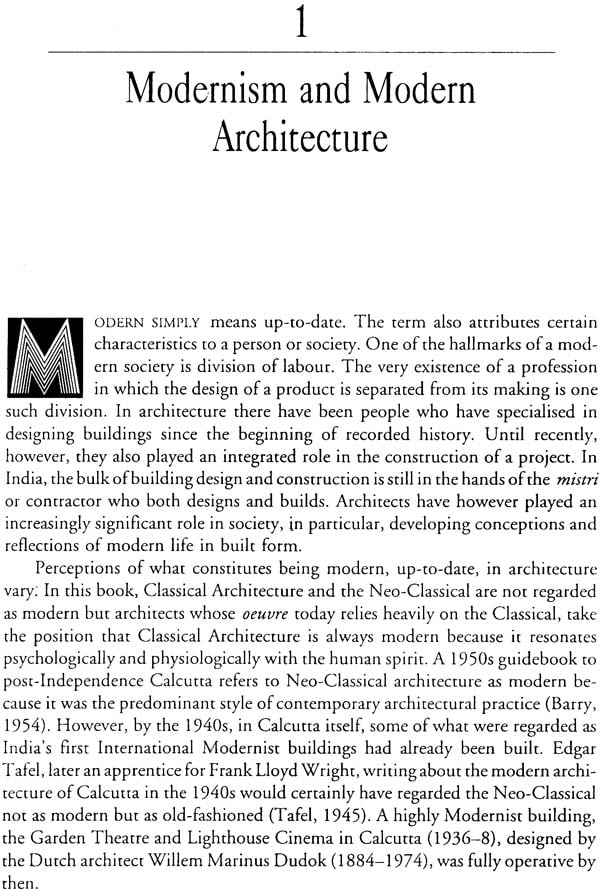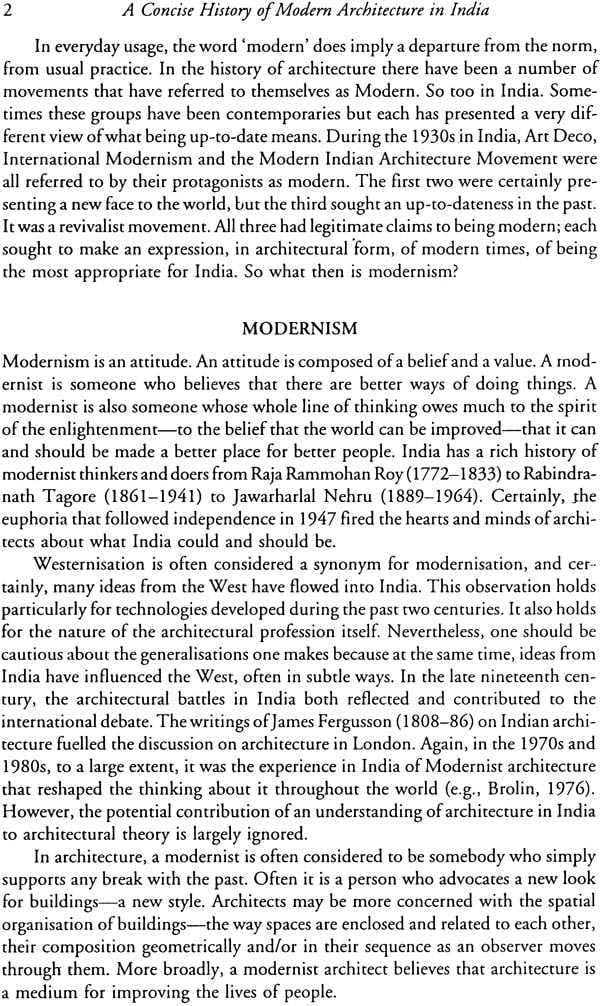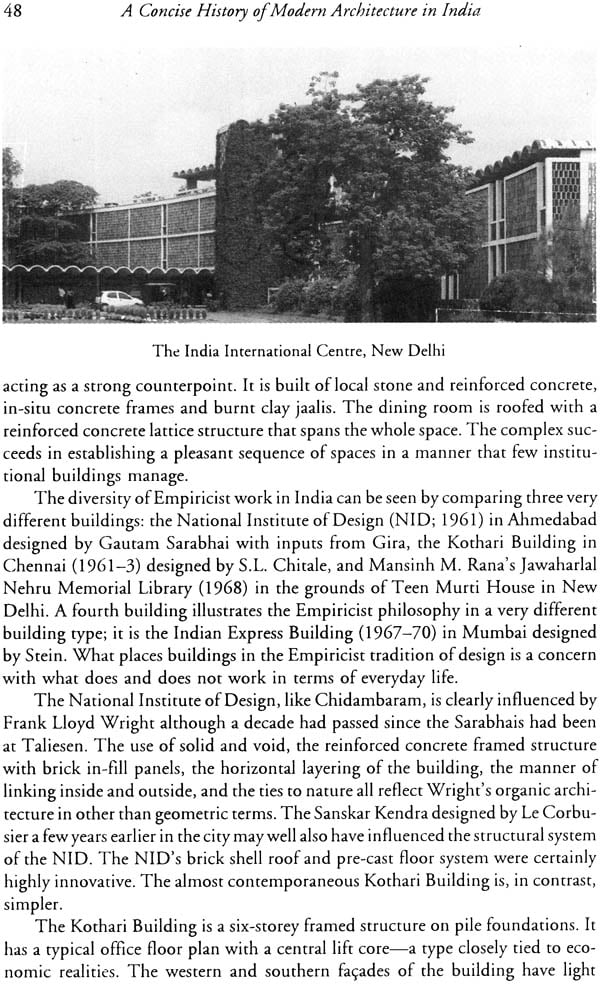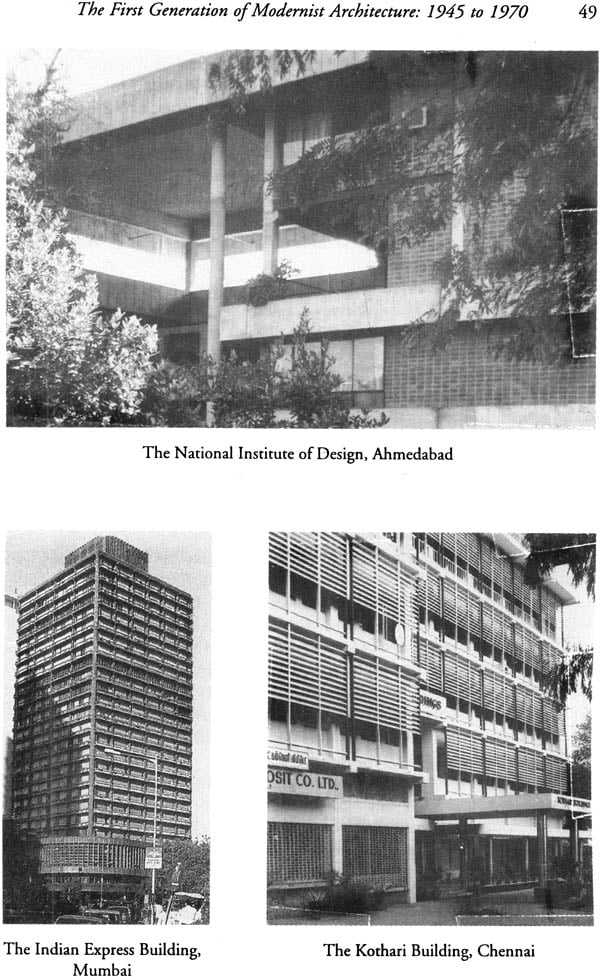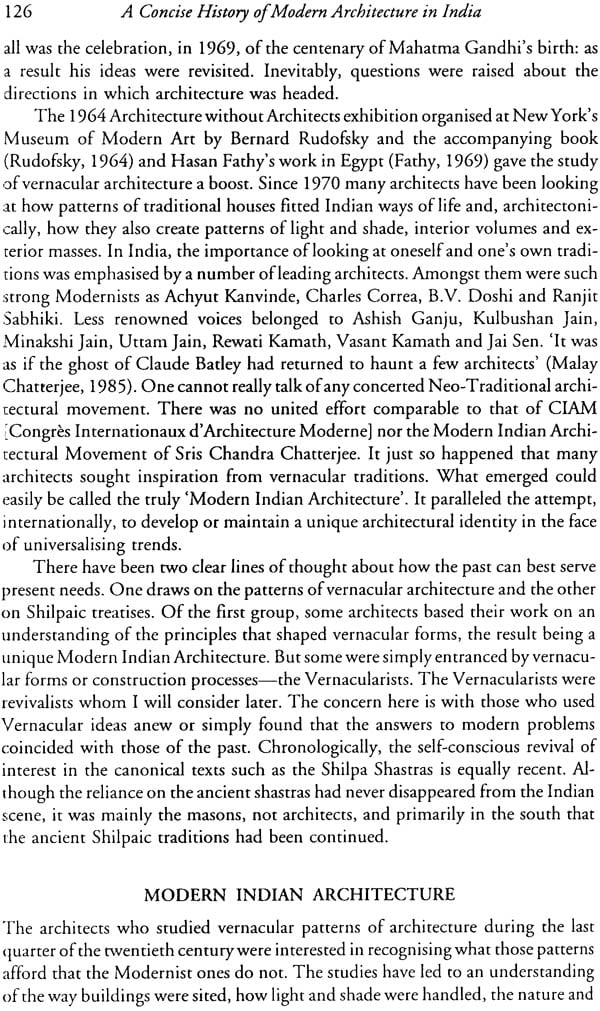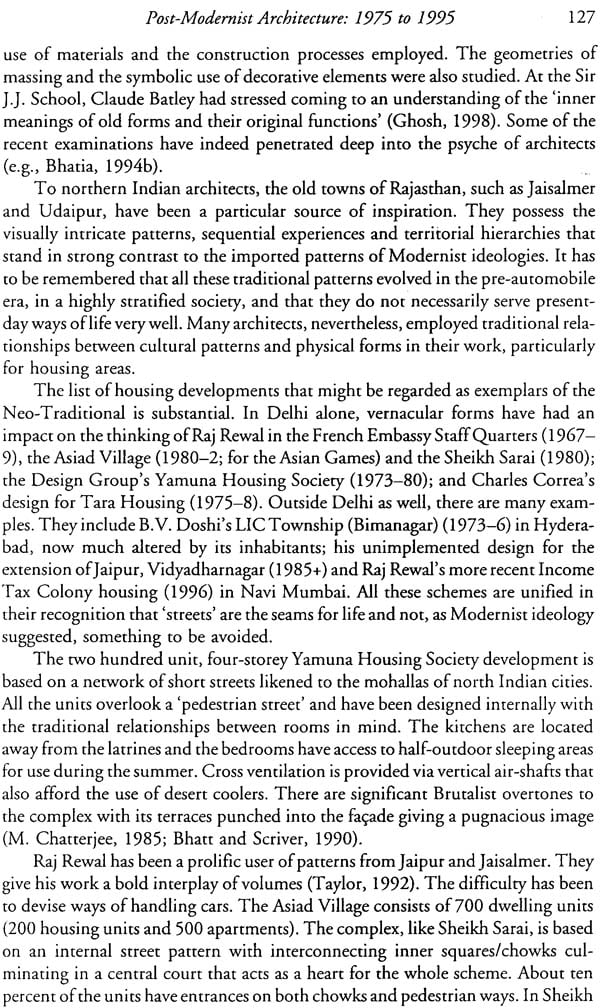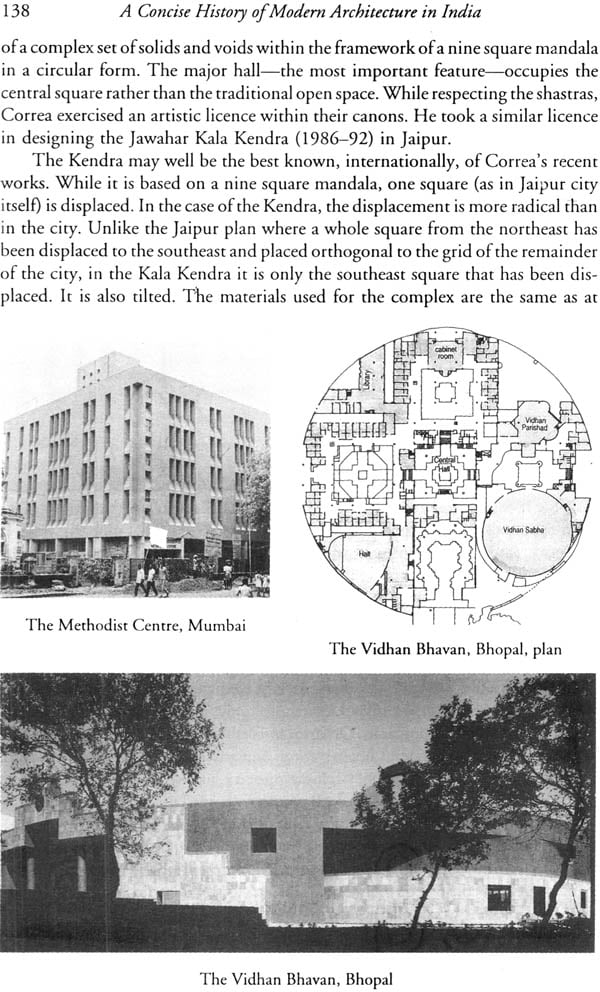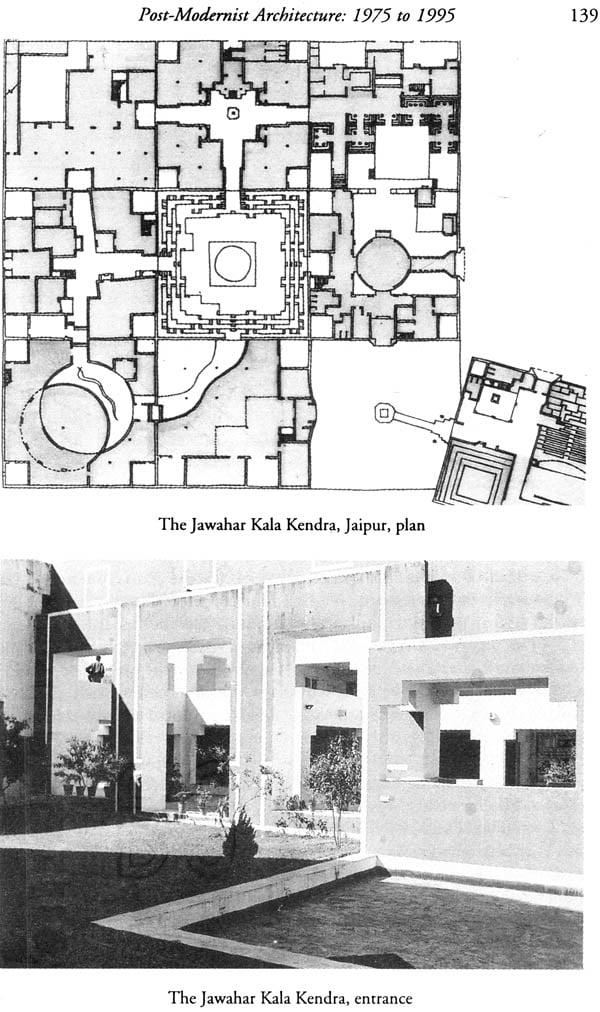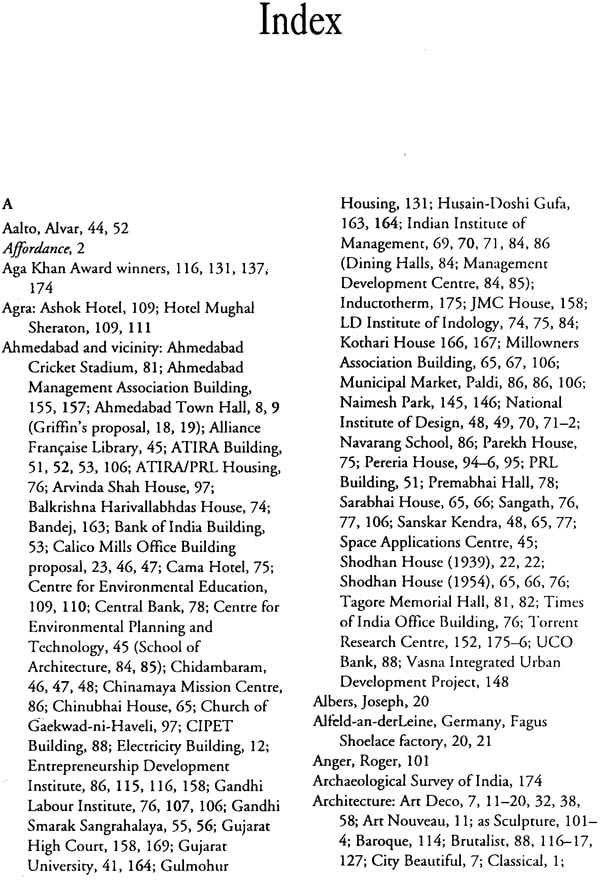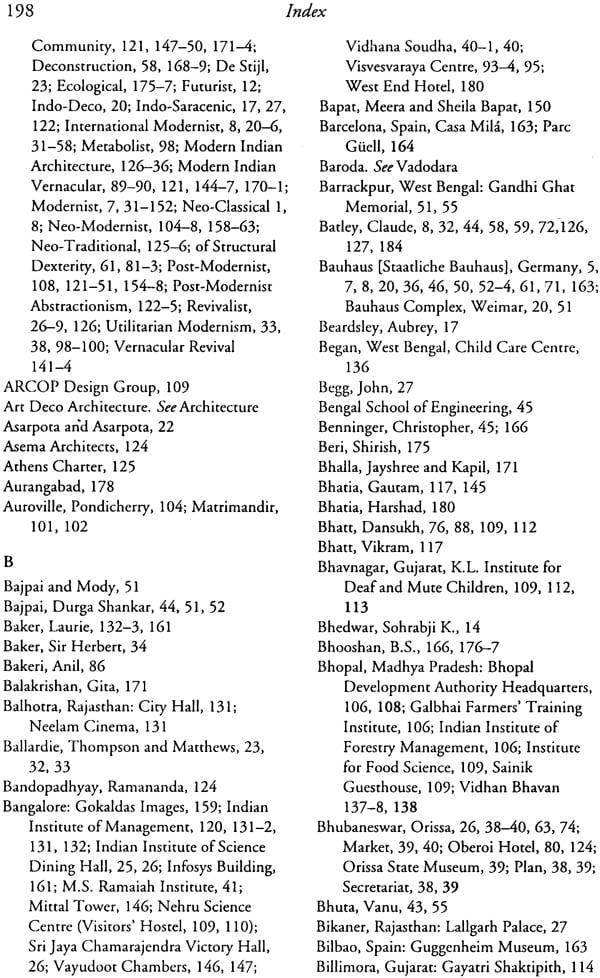
A Concise History of Modern Architecture in India
Book Specification
| Item Code: | NAH393 |
| Author: | Jon Lang |
| Publisher: | Permanent Black |
| Language: | English |
| Edition: | 2010 |
| ISBN: | 9788178243054 |
| Pages: | 214 (Throughout B/W Illustrations) |
| Cover: | Paperback |
| Other Details | 9.5 inch x 7.0 inch |
| Weight | 480 gm |
Book Description
About the Book
In lucid language that speaks to laymen and architects alike, Jon Lang provides a history of twentieth century architecture in India. He analyses its tangled developments from the founding of the Indian Institute of Architects during the 1920s to the present diversity of architectural directions. He describes the often contradictory tugs of the international and the local as he reviews architects’ efforts to be up-to-date in their work.
Lang examines the early influences on Indian architecture both of movements like the Bauhaus as well as prominent individuals like Habib Rehman, Jawaharlal Nehru, Frank Lloyd Wright and Le Corbusier. He looks at monuments, museums, resettlement colonies, housing, offices and movie halls all over India. Over 150 photographs and line drawings explain and illustrate concepts outlined in the text.
This is an invaluable book for those who want to understand the geography of their cities, as well as for students of Indian architecture.
About the Author
Jon Lang is Professor Emeritus at the University of New South Wales in Sydney, where he served as Head of the School of Architecture during the 1990s. In the 1980s he was Director of the Urban Design Programme at the University of Pennsylvania, where he taught from 1970 to 1990. He is co-author with Madhavi Desai and Miki Desai of Architecture and Independence: The Search for Identity (1997). He is also the author of Creating Architectural Theory (1987) and Urban Design: The American Experience (1994).
Preface
India has an extraordinarily rich architectural history and a great variety of current professional’ practices. Understanding them enriches the study of architecture everywhere. This book has the advantage of offering a disinterested view of architecture in India as it is allied neither with a school of architectural thought nor some aspect of the politics of the profession and professional attitudes in the country-perhaps partly because it is by a foreigner. It has, however, been written within a particular intellectual tradition, especially in its division of architectural philosophies into two broad categories: Rationalist and Empiricist. And while I am critical of much Modernist and Post-Modernist architecture I believe that ‘the Modernists almost got it right’ and recognise that all buildings are designed within an economic and political context. Above all it is as a non-historian with a social science rather than a humanities orientation to architectural theory that I have written. Like others then this history is an offering to debate, in this instance, on the nature of architecture and its role in society.
The book has been written with Indian architectural students in mind and focuses on describing the variety of ideas shaping architecture in India. It is hoped that it will be of interest to the practising architect too. The goal has been to present an intellectual overview of the various sub-plots within the history of architecture in India and to introduce some of the players. It is a concise view of a complex history. No single book can capture India’s diversity of architectural works and architects. Some buildings have been chosen, often arbitrarily, to represent lines of thinking and others, equally important, have been neglected. There are many fine architects and architectural firms whose work is not represented here. Indeed, the book focuses not on architects but on lines of architectural thought. As a result, few of the architects mentioned in the text will find what they regard as their best, or even most representative work, described in the book.
Many readers, particularly young students for whom the past may seem to be one long blur, will be dismayed by the number of dates in the book. The dates are important for they show when architectural ideas were being explored and at what point in the architects’ careers. They also enable fairly accurate inferences to be made about the potential influences of the work of one architect on that of another. All architects of the modern era have been inspired by earlier architects, borrowing ideas from them and then, often without acknowledgment, making them their own (Williamson, 1991). Although many architects present themselves to the world as born geniuses, it is clearly not so. Le Corbusier, one of the twentieth century’s architectural giants, for instance, took ideas from the past and from his colleagues with little acknowledgment and often misled others about his own background and education to enhance his self-image (Brooks, 1997). Indian architects owe much to other architects and to the world around them as indeed the world to Indian architects. This book is as much about the flow of ideas as about architects and buildings.
The goal of this book has been neither to praise Indian architecture nor Indian architects although there is much praiseworthy work and many highly creative architects. Laudatory texts abound. Those seeking a fine arts text, or an ‘arch talk’ book, will be disappointed. Here I seek to describe and explain architectural norms as they have been shaped in the country. It is the understanding of these processes that enhances the development of architectural theory. If this book proves to be a base from which scholars, individually or collectively, can delve more deeply into modern Indian architectural histories, it will have served its purpose.
Contents
| Preface | vi | |
| 1 | Modernism and Modern Architecture | 1 |
| 2 | Early Modern Architecture in India: 1920 to 1950 | 7 |
| 3 | The First Generation of Modernist Architecture: 1945 to 1970 | 31 |
| 4 | The Second Generation: 1950 to 1980 | 59 |
| 5 | Posr-Nehru Modernist Architecture: 1965 to 1990 | 91 |
| 6 | Post-Modernist Architecture: 1975 to 1995 | 121 |
| 7 | Searching for Appropriate Architectures: 1985 to 2000 | 153 |
| Glossary | 185 | |
| Bibliography | 187 | |
| Acknowledgments | 194 | |
| Index | 197 |
